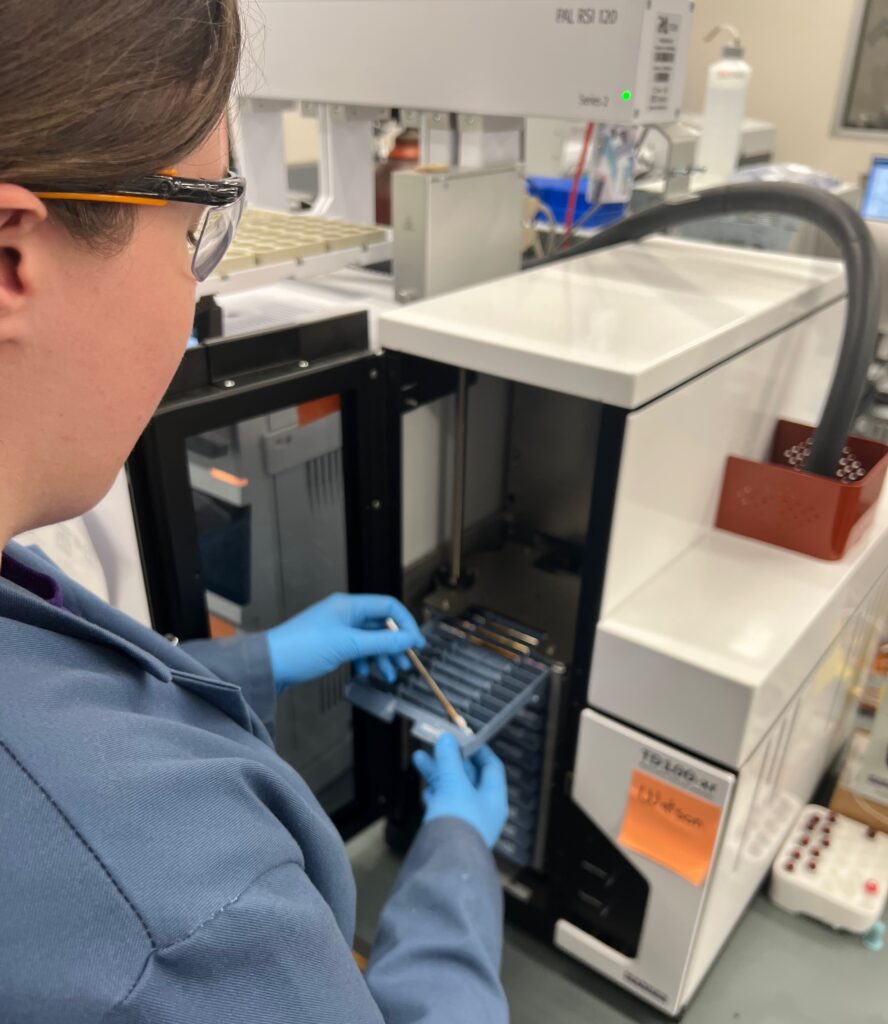
In environmental science laboratories, the versatile gas chromatography (GC) system holds a pivotal role in the analysis of organic and inorganic compounds. This article delves into the capabilities, strengths, and limitations of a multi-faceted GC system equipped with GC-MS/MS, HS-GC-MS/MS, SPME-GC-MS/MS, and TD-GC-MS/MS technologies, as well as an additional “Gas Analyzer” feature. These systems, coupled with varying injection modes, make it an essential tool in environmental analysis.
GC-MS/MS
The GC-MS/MS system in question uses an Agilent 8890 GC coupled to a 7000D MS/MS detector, offering both Electronic Ionization (EI) and Chemical Ionization (CI) modes. This system enhances sensitivity by selecting precursor and product ions, thus eliminating numerous background interferences. One of the main strengths of the GC-MS/MS system is its high level of specificity and sensitivity, making it an optimal tool for trace analysis. However, the system’s efficacy can be affected by the matrix interferences.
HS-GC-MS/MS and SPME-GC-MS/MS
Headspace Gas Chromatography (HS-GC-MS/MS) and Solid Phase Microextraction (SPME-GC-MS/MS) are effective techniques for analyzing volatile and semi-volatile organic compounds. The HS-GC-MS/MS technique excels at analyzing compounds with high volatility, reducing the risk of sample degradation.
On the other hand, SPME-GC-MS/MS is a robust technique that combines extraction, concentration, and sample introduction into a single step. It must be noted, however, that SPME-GC-MS/MS requires specific Smart SPME fiber holders. While versatile, the use of SPME-GC-MS/MS can be limited by factors like fiber coating, extraction temperature, and time.
TD-GC-MS/MS
Thermal Desorption Gas Chromatography (TD-GC-MS/MS) is particularly effective for trace level analysis of volatile organic compounds. Once the analytes are desorbed, they are concentrated on a cold trap before being sent to the GC-MS/MS. However, this process may also introduce other volatile compounds from the sample matrix into the GC. One limitation is that the sample size is restricted to the amount on the test strip. It is essential to know what volume of sample is absorbed by the test strip for accurate analysis.
GC Gas Analyzer
The GC Gas Analyzer excels in processing gas samples, with capabilities to handle liquid injections to the SCD and FID. It is primarily used for detecting gases such as H2, CO, CO2, N2, O2, CH4, propane, and ethane, with potential for NOx detection in the future.
The GC Thermal Conductivity Detector (GC-TCD) is a non-destructive detector that is sensitive to small changes in thermal conductivity. Meanwhile, the GC Flame Ionization Detector (GC-FID) is sensitive to hydrocarbons, making it ideal for environmental pollution studies. The GC Sulfur Chemiluminescence Detector (GC-SCD) is used for detecting sulfur compounds, such as H2S.
However, the current system separates the analysis of H2 from other gases, which might be a limitation in some analyses.
Conclusion
In sum, this versatile GC system, with its diverse capabilities, plays an essential role in environmental analyses. While each system possesses its strengths, it is critical to consider their limitations and the nature of the samples to ensure
